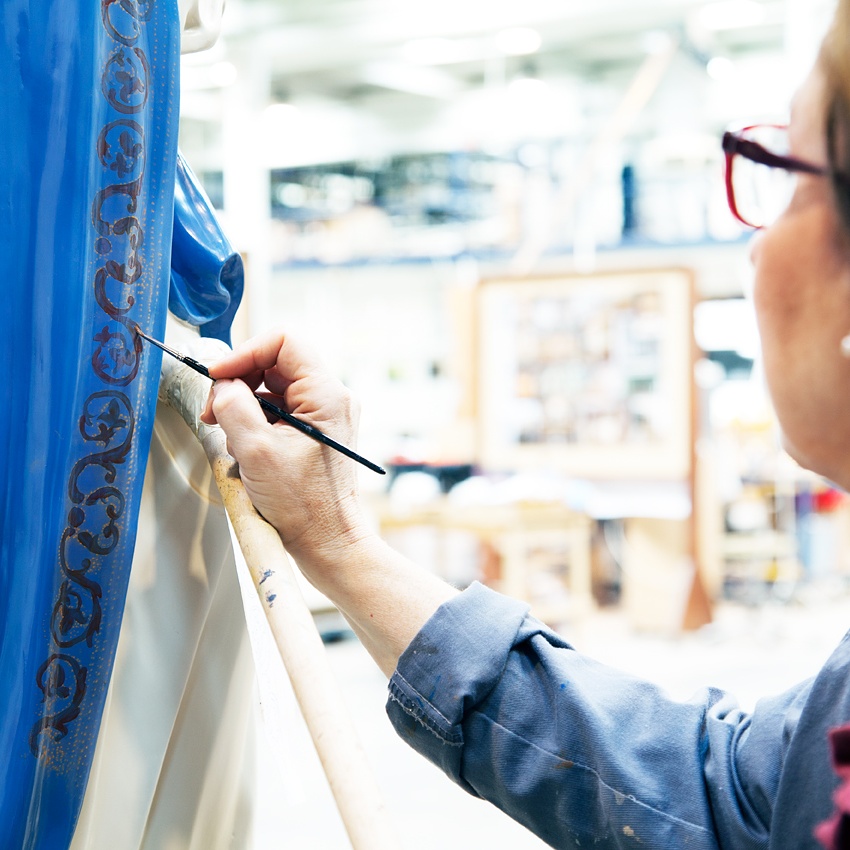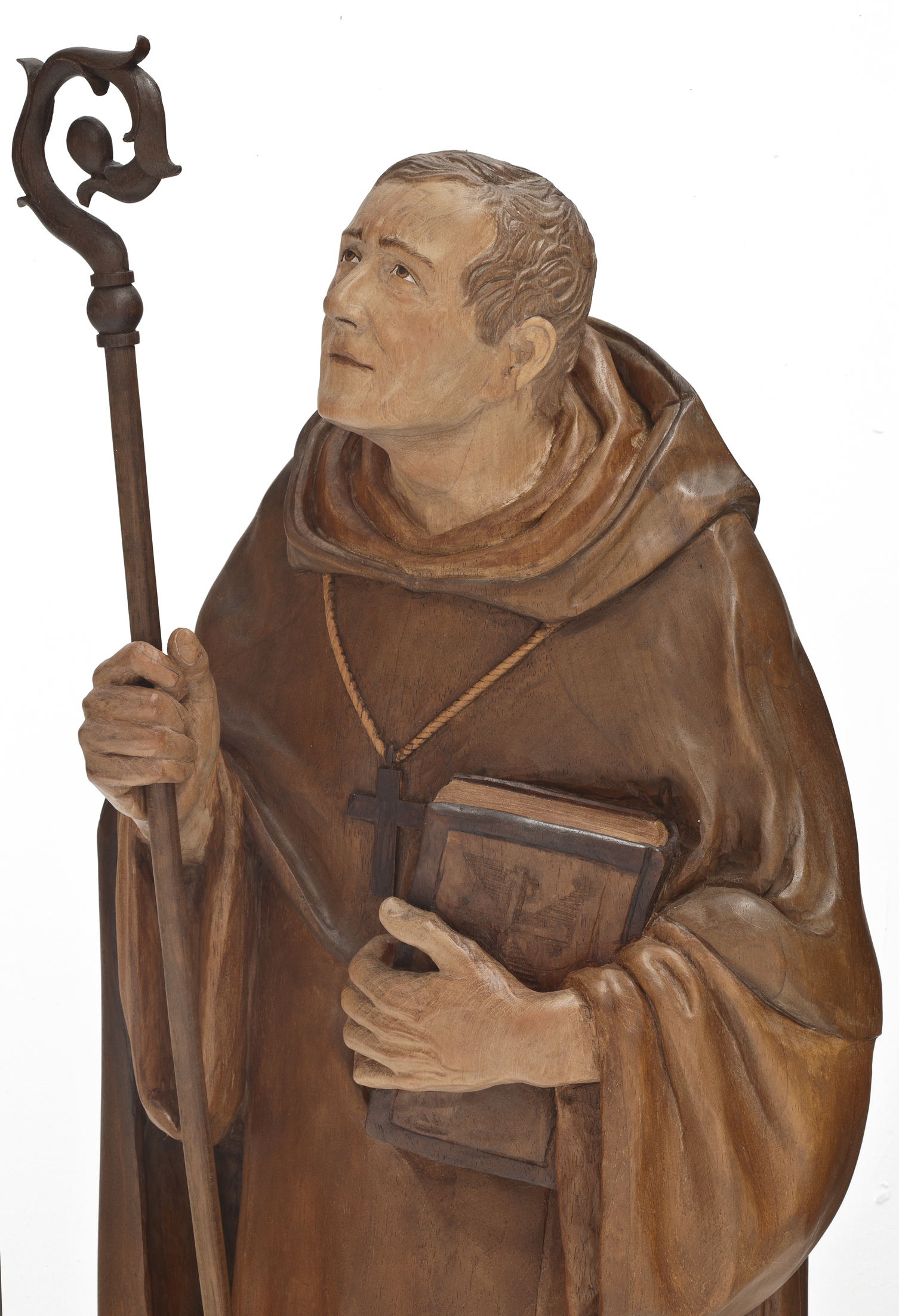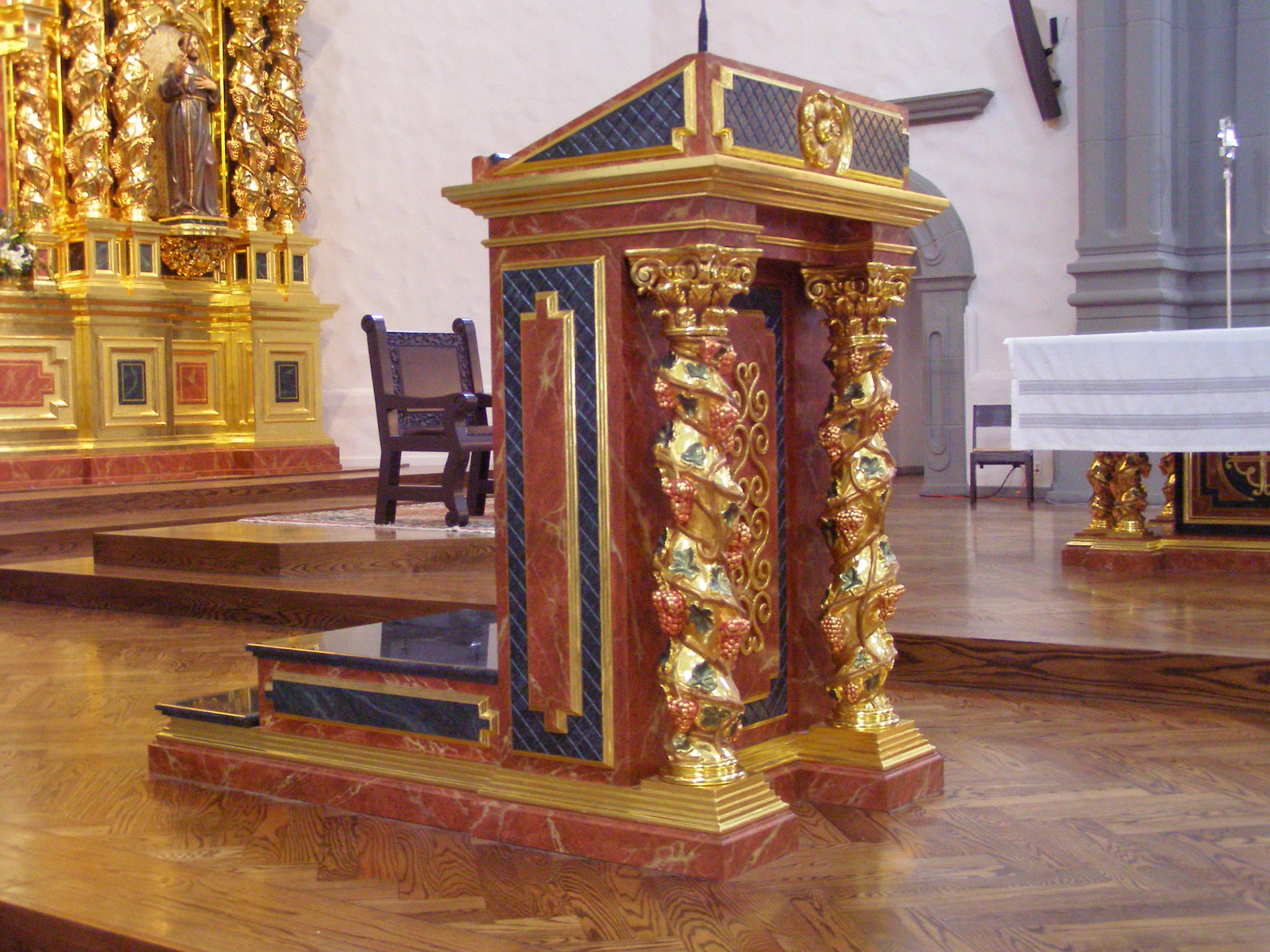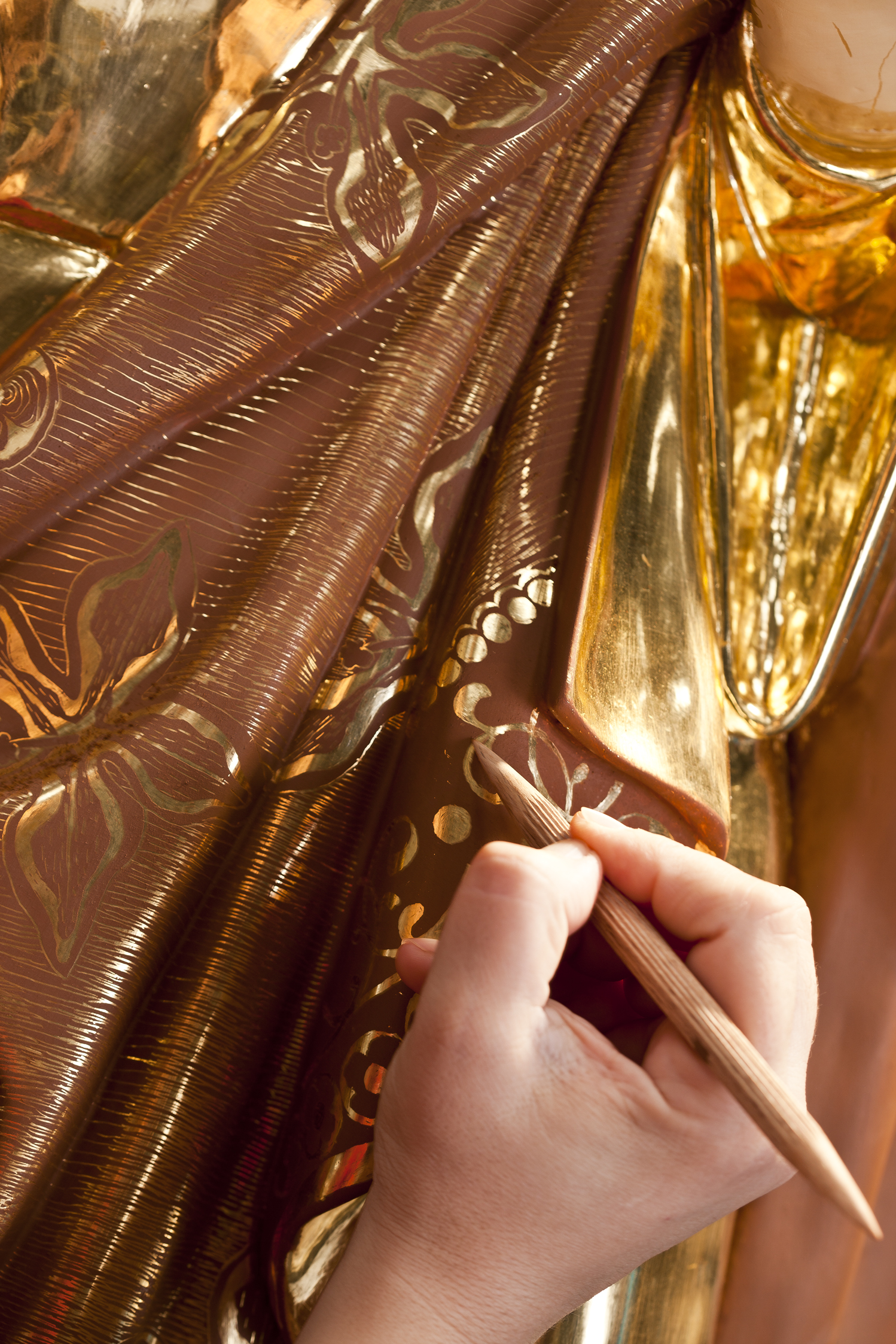
A craft technique with a millenary tradition
Polychromy is an artistic technique thousands of years old. It consists of giving color to an image or a surface that you want to ornament. This can be achieved by combining materials of different colors in the same sculpture or by painting its surface. This technique makes it possible to give a sculpture its own personality, reflecting movement in the clothing, tension in the bodies, life in the faces. The polychromator's mission is to breathe life into each carving, reflecting on the inert material the passions and inner feelings of the characters represented.
Photo: Image of St. Albert the Great (Talleres de Arte Granda)
This technique also allows simulating any type of finish on wood, in imitation of other materials, as shown in this image of a wooden support with a marbleized finish.

Photo: Wooden ambo with marbleized finish San Juan Capistrano (California)
In our workshops, polychromy is one of the most commonly used techniques, as it guarantees the realism of the carvings and gives the images a more naturalistic appearance.
Materials and types of polychromy
Polychromy can be done on different supports, such as wood, resin or marble. In Granda, the most used material is wood. This is where our artists create the largest format works such as altarpieces. The most used woods are cedar or linden. The choice is made according to the environmental conditions to which it will be subjected, and, before working on it, it receives fireproof, anti-parasite or anti-humidity treatments, according to the characteristics of the place where the works are destined.
To polychrome an image, dissolved colors are used in tempera, oil, or wax, which are then protected with a varnish. The pigments and glues used are the same ones that have been used in the tradition of Spanish imagery craftsmanship.
This technique can be applied in several ways with a very different result: there is the compact polychromeThe wood is completely covered by the wood (inside the wood there is the stew The image is covered with 24K gold leaf); the polychrome glazing, whose transparency reveals the original grain of the wood and the dyeing, which colors the wood with dyes.
Fine gold stew, the "queen" polychromy
The stewing of a carving is a complex decorative technique that requires a great technical knowledge and demands a special care for a beautiful and quality result. It allows to simulate in wood a noble metal finish or to give shine to the paints that are applied on top in imitation of damask cloth.
 Damask fabric is a very ancient fabric that originated in Syria. This fabric used to be made of silk or linen and combined gloss and matte of two colors. Its motifs, vegetable, fantastic or animated, together with its beauty and its high quality made it a fabric of great value..
Damask fabric is a very ancient fabric that originated in Syria. This fabric used to be made of silk or linen and combined gloss and matte of two colors. Its motifs, vegetable, fantastic or animated, together with its beauty and its high quality made it a fabric of great value..
To burnish a carving, it is necessary to prepare it with a specific type of plaster that repairs any imperfections in the wood. Then a layer of red earth called "bol arménico" is applied, a material that, by covering the piece, creates a flexible bed that will allow the gold to be burnished at the end of the process. The next step is the careful application one by one of the 24 karat gold leaves, for this a polonaise is used, a small brush of natural hair that allows the application of the gold leaves without damaging them. The gold leaves are a fragile material that requires delicacy and the use of appropriate tools.
Once the carving is gilded, it is burnished to give it a shine, although this step can be omitted if a matte finish is desired. Next, an egg-based tempera paint is applied. Once the layer of paint has hardened, the polychromator scribes the designed motifs with a wooden point so that the layer of paint leaves the gold visible.
Sometimes, for greater ornamental richness, enrichments such as precious stones or decorative motifs chiseled into the gold are added to the final finish.
